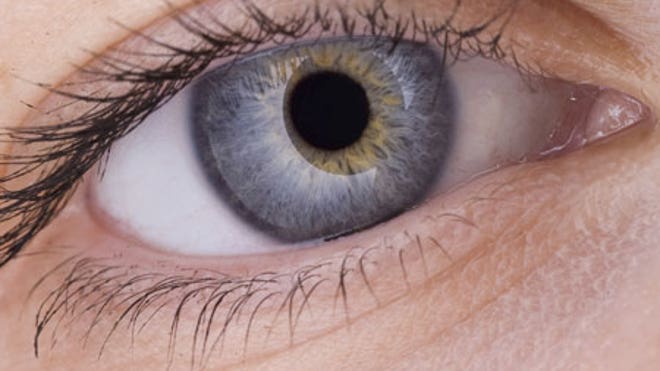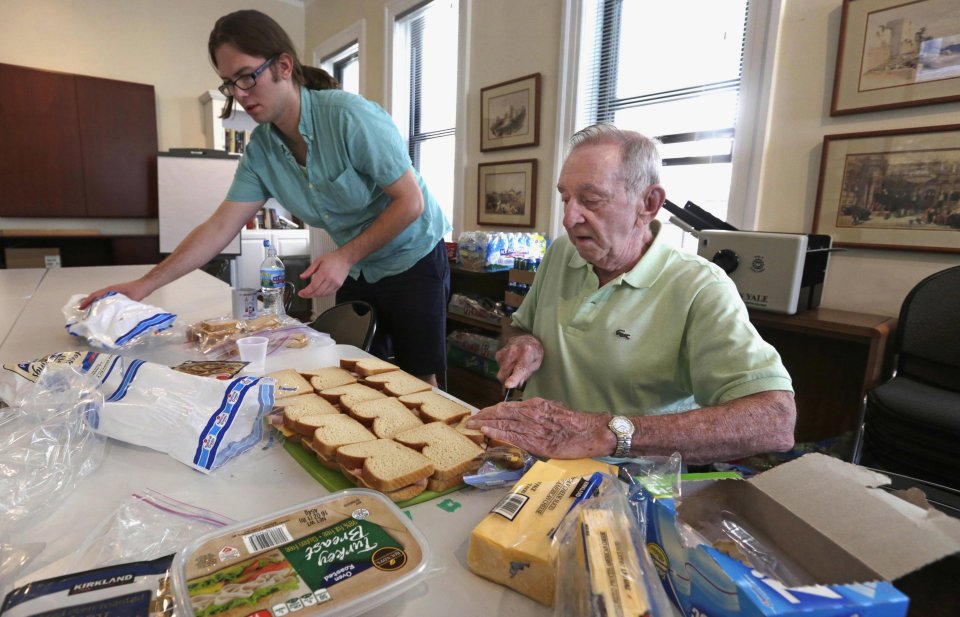Growing number of seniors caring for other seniors

January 6, 2014 3:59 AM ET
By MATT SEDENSKY from The Associated Press
NOBLESVILLE, Ind. (AP) - Paul Gregoline lies in bed, awaiting the helper who will get him up, bathed and groomed. He is 92 years old, has Alzheimer's disease and needs a hand with nearly every task the day brings. When the aide arrives, though, he doesn't look so different from the client himself - bald and bespectacled.
"Just a couple of old geezers," jokes Warren Manchess, the 74-year-old caregiver.
As demand for senior services provided by nurses' aides, home health aides and other such workers grows with the aging of baby boomers, so are those professions' employment of other seniors. The new face of America's network of caregivers is increasingly wrinkled.
Among the overall population of direct-care workers, 29 percent are projected to be 55 or older by 2018, up from 22 percent a decade earlier, according to an analysis by the Paraprofessional Healthcare Institute, or PHI, a New York-based nonprofit advocating for workers caring for the country's elderly and disabled. In some segments of the workforce, including personal and home care aides, those 55 and older are the largest single age demographic.
"I think people are surprised that this workforce is as old as it is," said Abby Marquand, a researcher at PHI. "There's often people who have chronic disease themselves who have to muster up the energy to perform these really physically taxing caregiving needs."
Manchess came out of retirement to work for Home Instead Senior Care after caring for his mother-in-law, who, too, had Alzheimer's and whom he regarded as his hero. The experience, though taxing, inspired his new career.
Three days a week, he arrives at Gregoline's house, giving the retired electrician's wife a needed break. He carefully shaves and dresses his client, prepares breakfast and lunch, cleans the house and quickly remedies any accidents. He does the laundry and swaddles Gregoline in a warm towel from the dryer, reads him the sports page to keep him updated on his beloved Bears and sometimes pulls out dominoes or puzzles to pass the time.
Gregoline is rather sedate this afternoon, relaxing in his favorite chair while occasionally offering glimpses of his trademark wit. Asked if he remembered anything about the Army, he says: "It was a bitch!" Offered the chance to go outside, he responds: "No! I'll freeze my ass off out there!" Describing an abrasive personality of long ago, he offers: "He followed me around like a bad conscience."
Manchess has worked for Gregoline for about a year, and the men are at ease around each other. Past aides to Gregoline have been in their 20s, but Manchess says he thinks his age is an asset.
"Age can be an advantage," he said, pointing to the common conversation points and life experience, including his own health troubles and aches and pains that can come with age. "We hit it off pretty well. Maybe I didn't seem to be too much out of the ordinary."
Around the country, senior service agencies are seeing a burgeoning share of older workers. About one-third of Home Instead's 65,000 caregivers are over 60.
Like most occupations, some of the growth in older caregivers is driven by the overall aging of the population and the trend of people working later in life. But with incredibly high rates of turnover and a constant need for more workers, home care agencies have also shown a willingness to hire older people new to the field who have found a tough job market as they try to supplement their retirement income.
The jobs are among the fastest-growing positions in the U.S., but are also notoriously physically demanding, with low pay and high rates of injury. Manchess has had spinal surgery and says he's especially careful when vacuuming. He's not sure how many years he'll be able to continue this work, and he acknowledges it can be tough.
"Halfway through my shift, I'm a little weary myself," he said. "It takes its toll."
Manchess had worked as an Air Force pilot, then in real estate, then as a school bus driver, before becoming a professional caregiver. As Gregoline contentedly nibbles on his ham sandwich, Manchess wraps up his shift, turning reflective when considering his life's careers.
"I think this is about as rewarding, if not more rewarding, than any of them," he said.
Article is C/O:
Associated Press http://www.ap.org/
Matt Sedensky, an AP reporter on leave, is studying aging and workforce issues as part of a one-year fellowship at the AP-NORC Center for Public Affairs Research, which joins NORC's independent research and AP journalism. The fellowship is funded by the Alfred P. Sloan Foundation and supported by APME, an association of AP member newspapers and broadcast stations.
___
Follow Matt Sedensky on Twitter at http://twitter.com/sedensky


























 The
The